
This Article From Issue
September-October 2007
Volume 95, Number 5
Page 460
DOI: 10.1511/2007.67.460
Sunless and airless, with pressures that can exceed a ton per square centimeter, the deep ocean is a forbidding place. But it is also a fascinating one, the Earth's largest living realm. Its novel denizens are the subject of The Deep: The Extraordinary Creatures of the Abyss—a coffee-table-sized book edited by French journalist Claire Nouvian. It features 200 gorgeous color photographs and 15 short essays by eminent ocean scientists, on subjects ranging from gelatinous predators, seamounts and deepwater coral reefs to hydrothermal vents, methane seeps and deep trenches (some deeper than the height of Mount Everest).
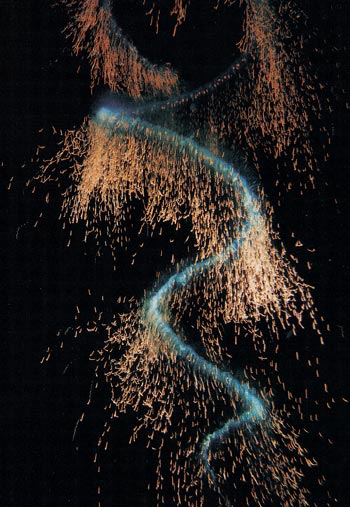
From The Deep: The Extraordinary Creatures of the Abyss.
Nouvian took her inspiration from a trip to the Monterey Bay Aquarium, three of whose experts are contributors to the book. The essays, which are aimed at a lay audience, take a backseat to fantastic images of the inhabitants of this alien world. In the deep, biomass is 5,000 times less dense than at the surface, but the species diversity is great, as the book illustrates. Browsers will undoubtedly find the alluring photographs irresistible.
In the ocean, bioluminescence is the norm. Some animals have "headlights" that let them see into the distance; others use light for defense (as camouflage or to blind attackers) or as a lure. The creature above looks for all the world like a helical fourth-of-July sparkler, but it is actually an unidentified species of physonect siphonophore measuring 45 centimeters. When feeding, it deploys thousands of bioluminescent tentacles to attract and poison prey.
A 20-centimeter crustacean that lives 2,300 meters below the surface on a submarine ridge south of Easter Island wouldn't ordinarily attract much interest outside of taxonomic circles.
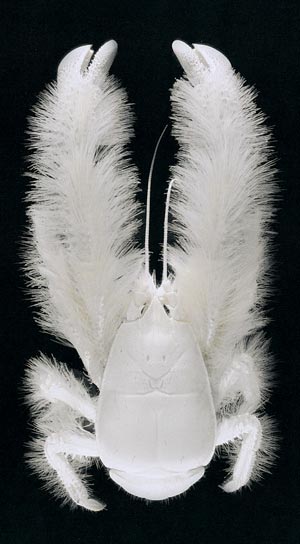
From The Deep: The Extraordinary Creatures of the Abyss.
But Kiwa hirsuta (above) garnered intense public attention when its discovery was announced in 2005; within the week, a plush-toy likeness was available in Japan. K. hirsuta resembles a hairy, albino lobster and has been dubbed the Yeti crab.
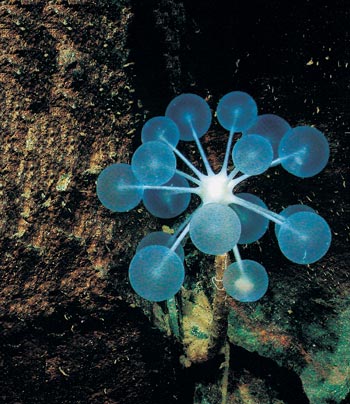
From The Deep: The Extraordinary Creatures of the Abyss.
The organism resembling a modernist light fixture (above) is a Ping-Pong tree sponge (Chondrocladia lampadiglobus), which can reach a height of 50 centimeters. A carnivore, it has Velcro-like spicules on its surface, the better to capture the creatures that alight on it. Cells in the sponge then migrate toward the prey and consume it.
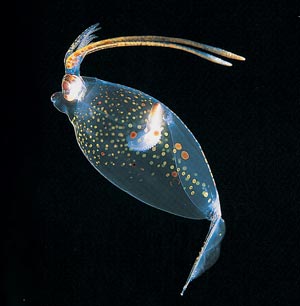
From The Deep: The Extraordinary Creatures of the Abyss.
The aptly named cockatoo squid (Galiteuthis phyllura) above is only half grown but will eventually reach a length of up to 2.7 meters. Its colored spots are bioluminescent photophores that help disguise its opaque eyes, the only part of its body that isn't transparent. While at rest, the squid holds its arms and tentacles over its head in a sort of tuft.
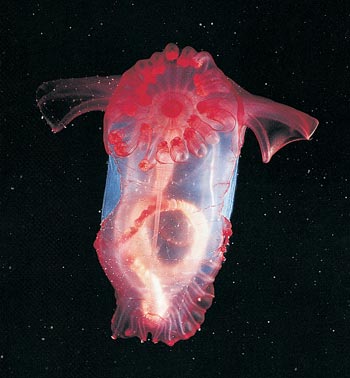
From The Deep: The Extraordinary Creatures of the Abyss.
Above is a deep-sea Spanish dancer (Enypniastes eximia), a type of sea cucumber that grows to be up to 35 centimeters long. The slow beat of its frilly ruffle propels this filter feeder through a range of depths between 500 and 5,000 meters. Its translucency reveals its internal organs, including its digestive tube.
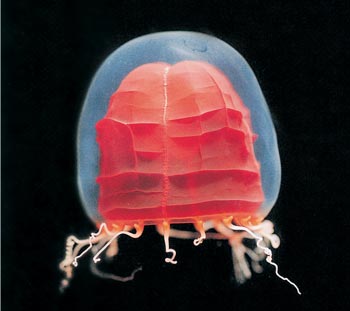
From The Deep: The Extraordinary Creatures of the Abyss.
Unlike nearly all other gelatinous animals, the red paper lantern medusa (Pandea rubra) above can crumple and wrinkle its crimson mantle and fold its form into right angles. A team of scientists who thought it was a new species called it the "origami jelly" before realizing it had already been named.
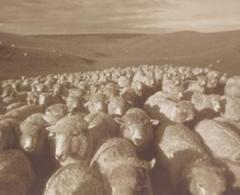
American Scientist Comments and Discussion
To discuss our articles or comment on them, please share them and tag American Scientist on social media platforms. Here are links to our profiles on Twitter, Facebook, and LinkedIn.
If we re-share your post, we will moderate comments/discussion following our comments policy.